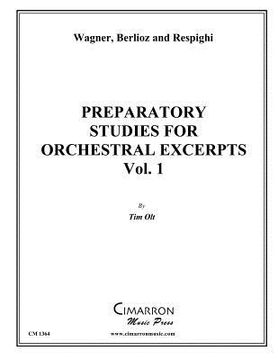Preparatory Studies for Orchestral Excerpts, Vol. 1: for Tuba (in English)
Synopsis "Preparatory Studies for Orchestral Excerpts, Vol. 1: for Tuba (in English)"
Preparatory Studies for Orchestral Excerpts - Tim Olt Tuba Excerpts include: Lohengrin - Wagner Ride of the Valkyries - Wagner Hungarian March - Berlioz March to the Scaffold - Berlioz Fountains of Rome - Respighi Each excerpt includes exercises that will help prepare an aspiring tuba player for future auditions. Partial preface from the author: The first thing that must be said about these exercises is this: THESE WILL NOT WIN YOU AN AUDITION! Wow, great way to start a book like this. But this is reality. These exercises are designed to help overcome some of the most common problems within the various excerpts. In each excerpt we will discuss some (note that I underlined some) of the standard issues that a committee is watching over as you perform. These are not the only issues! First and foremost, we must all be great musicians. Yes, we have picked the tuba as our instrument, but don't just strive to be a great tubist, but rather a great musician who chooses the tuba as her/his medium of expression. As you begin to approach orchestral excerpts, the first and biggest thing to do is LISTEN. Get great recordings in your possession (any library will generally have at least the major works, if not some of the more obscure). If possible and/or practical, get a score. Watching the tuba part go by may be fun, but there is WAY more going on. When we audition, the committee wants a sense that we hear everything else in the orchestra happening in our head and that we are inserting our part into that framework, not merely executing a solo rendition of the passage. Know the function of the part: bass for the brass, woodwinds, strings, wind choir, etc., duet/trio/X-tet with bassoon, cello, trombones, horns, basses, etc., accompanied solo, unaccompanied solo..... you get the picture. A few general concepts that every committee is looking for: time, rhythm, time, pitch, time, accuracy, time, time and time. Did I mention time? Yes, time is one of the most critical aspects of playing for us in an audition. Bluntly, if you can't put it in the right place at the right time without affecting the tempo around you, it doesn't matter how pretty you play. Plenty of people can play a pretty line with lots of rubato, but few can do the same and keep steady time. Also, notice I mentioned time and rhythm separately. Rhythmic accuracy is very important, but again, if you drag or rush, just because the ratios of the notes is there, you aren't in time. Pitch and accuracy are also important, but there are quite a number of documented cases where the person winning a major audition did not necessarily play every note perfect, but rather presented a strong package with the all the components in place, but maybe a small note bobble. I am sure you are wondering why I didn't mention style in the list. Point blank, style comes from listening and experience. No matter how well notated the work ink on paper does not equal style. That comes from inside us. The notation is merely a guide. Sure, we have to recognize and understand that accents mean different things from one composer to another, but that comes from our immersion in the music. Listen, listen, LISTEN! Another aspect to the listening camp is recording. Record yourself periodically to see how things sound from the other side of the bell. Often we believe everything is great, but one moment on tape tells us a different story. Several ideas on recording yourself: 1. Use a metronome from time to time. Record with and without to see if your time is steady. 2. Don't always listen right after you record. When practicing, do some recording and listening during the session to isolate and work through certain problems. Then at the end of the session do a final recording to keep as an archive for later. Listen to that recording at least one day later, preferably longer. etc.

